The Honda CRF450R has been a consistent front-runner in Dirt Rider's 450 Motocross Shootout since its radical redesign back in 2017. Since then, Big Red has made updates to it each year to further refine its flagship motocross bike. With the 2020 model having new electronic capabilities and revised suspension settings, we were looking forward to testing it with the hope that, just as in 2019, they took another big step forward. After a day of testing on the CRF450R at Glen Helen Raceway in San Bernardino, California, we can say that while Honda did make some improvements, it's nothing like how much of a difference there was between the 2019 model in comparison to the 2018 bike.
Honda currently has one of the most powerful and responsive 450cc dirt bikes to ever hit the market. This engine was first introduced in 2017 and has continually been fine-tuned to improve its rideability. For 2020, Big Red introduced an all-new system called Honda Selectable Torque Control (HSTC) with three levels of intervention. In other words, traction control. The HSTC monitors rpm spikes and responds by temporarily reducing torque to aid rear wheel traction. It’s controlled by a handlebar-mounted switch that allows for selection between three modes depending on track conditions and rider preference. Honda also revised the three available maps— map 1 (standard), map 2 (smooth), and map 3 (aggressive). The HSTC and map switch are two separate buttons that each have their own dedicated duties.
Honda riders will recognize the multifunction engine kill switch, map selector, and MIL light. Adjacent to that switch is another push button switch that controls the three levels of HSTC. So, if you’re keeping count, that is three map options with the HSTC off. Turn on the HSTC and now you have three more settings per map, which makes for an additional nine settings. With that, you have a potential of 12 different settings for the ECU available on the handlebar. But that’s not all of it. The CRF450R also has three launch control modes to help you get the “Absolute Holeshot.” Oh, and did I mention that the maps also change based on information from a shift sensor that tells the ECU what gear you’re in?
In the time I spent riding the CRF450R, which was about three hours, I had a very hard time finding what I was looking for in the mapping options. However, the bike is still very fast and responsive right off the initial crack of the throttle.
The engine characteristics are very similar to last year’s model and I had a hard time noticing the HSTC. For the most part, I was bouncing between map 2 (smooth) and map 3 (aggressive). The smooth map was simply that, just a little smoother. The aggressive map was a little more deceiving. It felt like there was increased torque allowing me to carry a taller gear in many sections, in turn making the bike run smoother.
Being able to carry a taller gear on the CRF450R is significant because of its snappy and very responsive power delivery. The Honda’s light and nimble-feeling chassis is very sensitive to throttle position, rider position, and suspension settings. Adjustments even down to one click on the fork or shock can be felt. Running a taller gear minimizes the abrupt weight transfer on initial throttle opening.
The transmission is the same as 2019 and has trademark Honda shifting; it’s smooth and requires little to no clutch input. The gear ratios are good and evenly spaced. The clutch is the same as 2019 as well. Overall it has a good feel, but if you are a clutch abuser there is a little fade.
Honda updated the internal fork and shock settings in an effort to improve chassis balance and overall handling. My first impression of the new suspension setup is that it is softer than previous settings. At times, I felt like the bike was going too deep in the stroke causing an uncomfortable rebound that could make the bike not want to stay in line with the direction of motion. This was more noticeable on acceleration than with braking.
The Showa technicians worked with me on settings, but in very small steps. I was able to make some improvements and also made some changes that were in the wrong direction. This bike takes a lot of time to fine-tune, and if you are not careful, you can easily go backward. I was not able to come up with a setting that I would be able to recommend, but will continue to work with the bike to see how close we can get the stock components to perform to their true potential.
The changes to the chassis are minimal. Honda noted that they lowered the battery box in a continuing effort to improve chassis balance and handling.
The CRF450R might be one of the heavier bikes on the scale, but still could feel like the lightest bike on the track. Its agility and ease of changing lines make it a fun bike to ride. Add in some great cornering ability with good track conditions and you can really feel good on this bike. Its ability to transfer weight to the rear wheel means that rear wheel traction is fantastic. Naturally, the opposite effect is that the front wheel can lack some feel. You need to remember to ride forward if you want to keep the front wheel planted.
Overall, I would say the 2020 Honda CRF450R is very comparable to the 2019 model. It has improved, but only slightly. The suspension is softer and more tunable. The ECU systems are new and seem to have potential to offer the rider an advantage on the track once he learns what settings are best for him and the track conditions.
Helmet: Fox Racing V3
Goggle: Fox Racing Vue
Jersey: Fox Racing 360 Linc
Gloves: Fox Racing Flexair
Pant: Fox Racing 360 Linc
Boots: Fox Racing Instinct










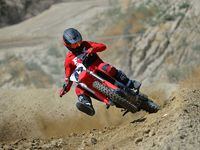
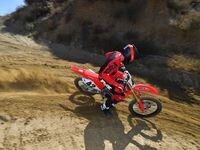
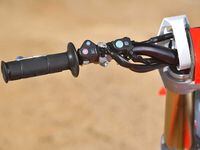
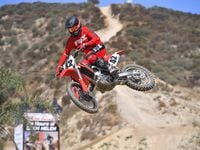

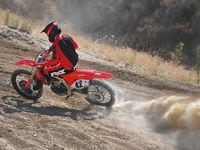
/cloudfront-us-east-1.images.arcpublishing.com/octane/MQXQRYMZVBCWJIRYP3HEN3SHVE.jpg)
/cloudfront-us-east-1.images.arcpublishing.com/octane/TSPODNNEWRDSVJGUCNQTDG4ADI.jpg)
/cloudfront-us-east-1.images.arcpublishing.com/octane/X5TB7BDV4BA2RPSY54ZGK27RP4.jpg)
/cloudfront-us-east-1.images.arcpublishing.com/octane/REUHOJXRDBGZ5IHBYZCCBCISPA.jpg)
/cloudfront-us-east-1.images.arcpublishing.com/octane/52LGJTCKBFEHDF7S7H4CVUIMGM.jpg)
/cloudfront-us-east-1.images.arcpublishing.com/octane/YMWAIPIPSJAOXOU3QMJMGH37OM.jpg)


/cloudfront-us-east-1.images.arcpublishing.com/octane/EJ6KZRGAYBCVXNL2PJXL37UVWQ.jpg)
/cloudfront-us-east-1.images.arcpublishing.com/octane/AAN4TI76M5H5JMUVEIGASWXBDU.jpg)
/cloudfront-us-east-1.images.arcpublishing.com/octane/P3RXD2UCPFF37CMB7CHPVKXORY.jpg)
/cloudfront-us-east-1.images.arcpublishing.com/octane/VZEG2EJI2RDFZNHLRZMU56MD3Q.jpg)
/cloudfront-us-east-1.images.arcpublishing.com/octane/GVJQO5FFOFBWNGODOBRB4FBAW4.jpg)
/cloudfront-us-east-1.images.arcpublishing.com/octane/BIVAK2SFIBDJJM25E7I5VU2FJE.jpg)
/cloudfront-us-east-1.images.arcpublishing.com/octane/CH5VX52UG5CFHOVH5A6UYEFWWA.jpg)
/cloudfront-us-east-1.images.arcpublishing.com/octane/ZVGJNGZRU5C33N7KN23BBFKSC4.jpg)

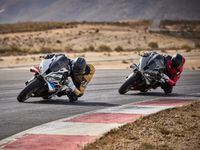
/cloudfront-us-east-1.images.arcpublishing.com/octane/CZ5OM3E43ZEXJHY7LCYXCHLIKI.jpg)
/cloudfront-us-east-1.images.arcpublishing.com/octane/DF5T4K5KPZFJXFCTGPYR77PKJM.jpg)
/cloudfront-us-east-1.images.arcpublishing.com/octane/RMCT2KVQBJHBZMRTSLOVPMOILU.jpg)

/cloudfront-us-east-1.images.arcpublishing.com/octane/K45KB2XHQVA65DX7VN4ZSMT2BI.jpg)
/cloudfront-us-east-1.images.arcpublishing.com/octane/FNHXQQ56BRD7TO4YIJ453PNG2M.jpg)